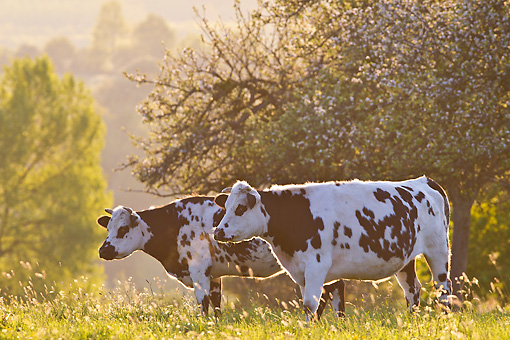
Why Register?
1. When breeding and selling seedstock, even if it’s only one calf a year, a registry serves as a 3rd party that identifies and documents exactly what breed(s) and bloodlines a registered animal has in its pedigree. Registration cannot improve an animal’s quality, it will significantly increase a quality animal’s value. A prospective buyer can see immediately which other breed(s) are in its background, and as well as which bloodline(s) it carries. That can help indicate which traits, strengths or weaknesses the animal may have, as well as indicate which DNA tests may be called for.
2. A Registration Certificate helps with animal identification. It can be used for transport, export, veterinary CVI (health certificates), genetics (semen or embryo transfer) collection, public breed exhibition, and helps establish ownership in cases of loss or theft.
3. Even crossbred cattle that are less than 37.5% purebred can be recorded (as opposed to being registered) as foundation breeding cattle. This lends credibility by providing important genetic breed information in purebred grading up programs.
4 Reasons to Register with USNO
1. All cattle on USNO registration certificates are identified with their original registration name and number. USNO recognizes and preserves all registered animals’ first registration numbers (issued by a legitimate registry) for life. For example, USNO uses French bred Normande cattle’s original registration numbers first issued by OS Normade in France.
2. All animals registered by USNO are issued registration numbers prefaced with the internationally recognized Normande cattle breed code of NO, as well as their country of origin (COO), state born in, and year of birth, when known. While all original registration numbers (issued by other registries) are kept intact, they are prefaced with the same internationally recognized ID number prefixes. This is required for export to most countries, and is either required or helpful in border crossings. International animal ID is also appreciated and relied upon in the frozen genetics profession, by most collection agencies. It can also be an advantage when entering cattle in major show venues.
3. All cattle on USNO registration certificates are accurately identified with their true Normande percentage as known, with their complete breed composition. This both protects the purity of the Normande breed, and assists breeders managing the genetics in their herd. This also protects the integrity of 100% fullblood Normande cattle—by never allowing upgrades to be categorized over 99+%. USNO keeps fullblood genetics safely identified and preserved for posterity.
POLLED NORMANDE CATTLE: USNO does not recognize any Polled Normande cattle as 100% Fullblood Normandes. Read HERE about the introduction of polled genetics in the Normande breed.
4. USNO promotes & protects the Normande breed as a dual (or multiple) purpose breed, as they have always been in France, their country of origin. USNO does not require breeders to choose between dairy or beef type Normande cattle. USNO does not police trait selection. Trait selection is up to Normande cattle breeders. Buyers who are unfamiliar with Normande breed traits, can learn more about how to choose Normande cattle that will fit their program on this website.
Normande Colors
- The Normande is a homozygous red & white breed of cattle. There are 4 different names for Normandes’ color variations used in registration; depending upon which color dominants the coat. Normande colors include Quail, Blond (the original French spelling), Brindle and Mahogany.
- Calves do not typically display their brindle striping or their very dark mahogany coat colors until they shed their calf coat. Generally, Normande cattle tend to darken as they age. Some, especially bulls can appear black.
- Normandes are characterized by pigmentation on the ears, noses and around the eyes. They should also have pigment over the scrotum and teats. This color trait is essential to the health of the cattle, and is passed on to crossbreds in F1 crosses, making them ideal for crossbreeding. Eye goggles, pigment around ear edges and on the nose helps prevent cancer. It is a registration requirement for Fullblood and Purebred Normandes, and is critical when selecting breeding stock. Pigment on the udder, teats, and scrotum is not required for registration, but should be selected for.
- Trouted: Any color Normande can be trouted; which is when they display additional pigment, spots or speckling on the skin that shows under their white hair.
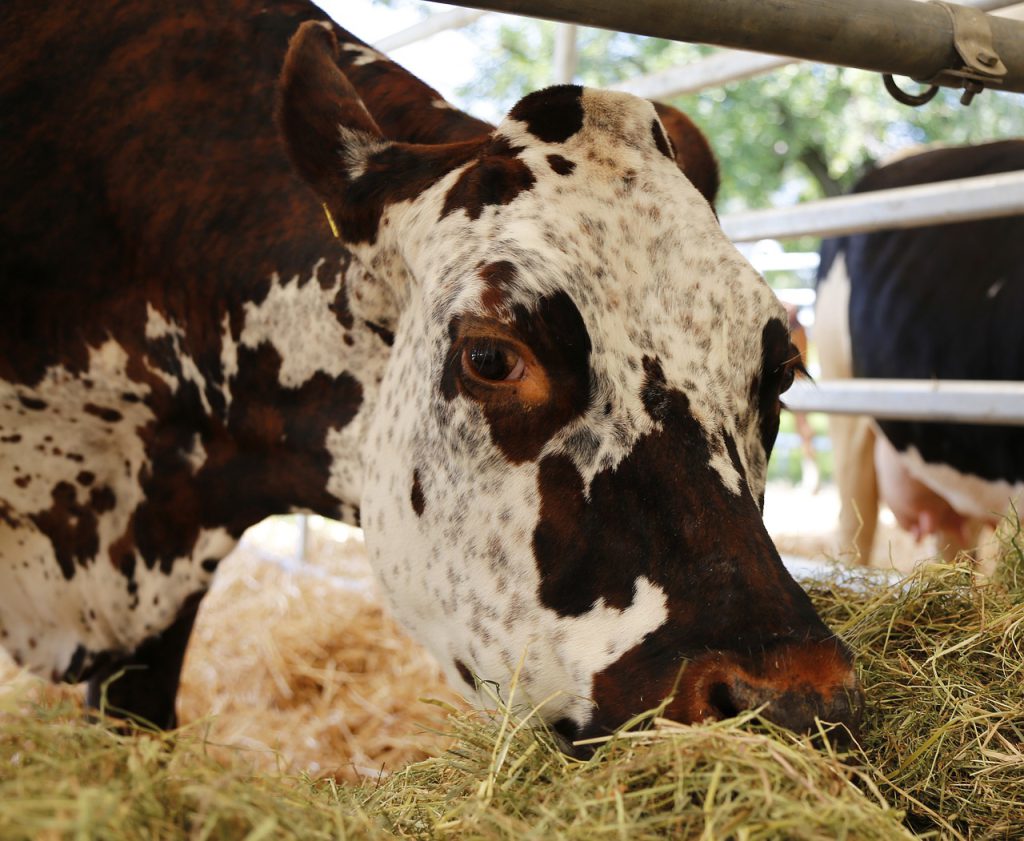
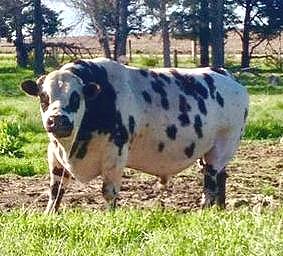
Quail: Cattle that are mostly white, with speckling or spotting of color over the body.
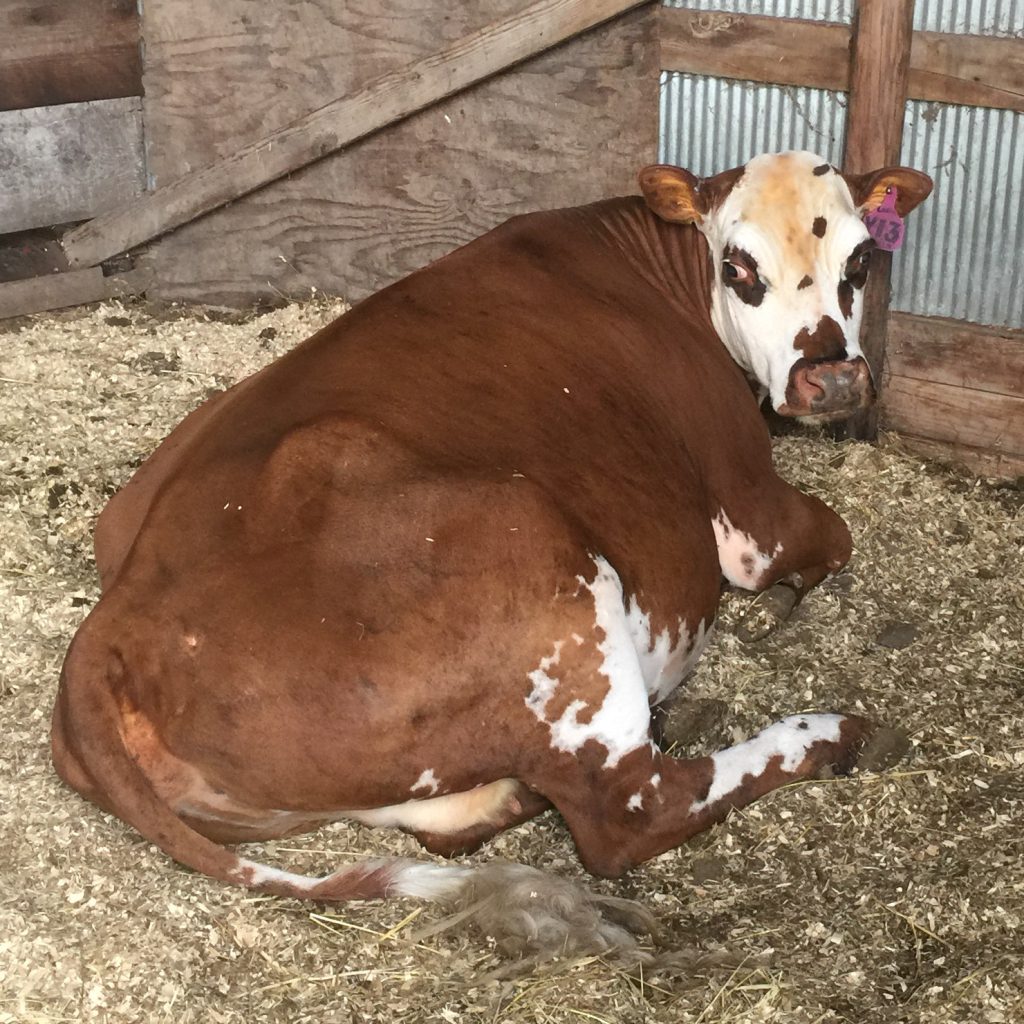
Blond: Cattle that have larger spots or patches of color that cover most of the body. Coat color appears predominantly blonde, fawn, or red in color. Most of the underpinning area remains white.
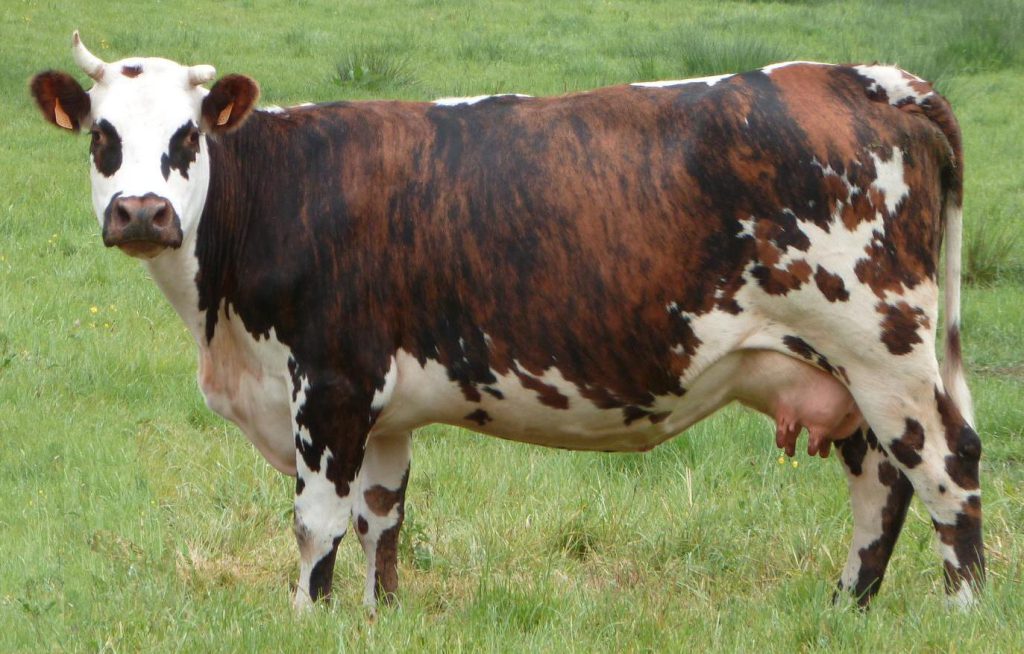
Brindle: Cattle that have spots or patches of color that cover most of the body. Coat color appears predominantly brindle (or tiger striped) in color. Most of the underpinning areas remain white.
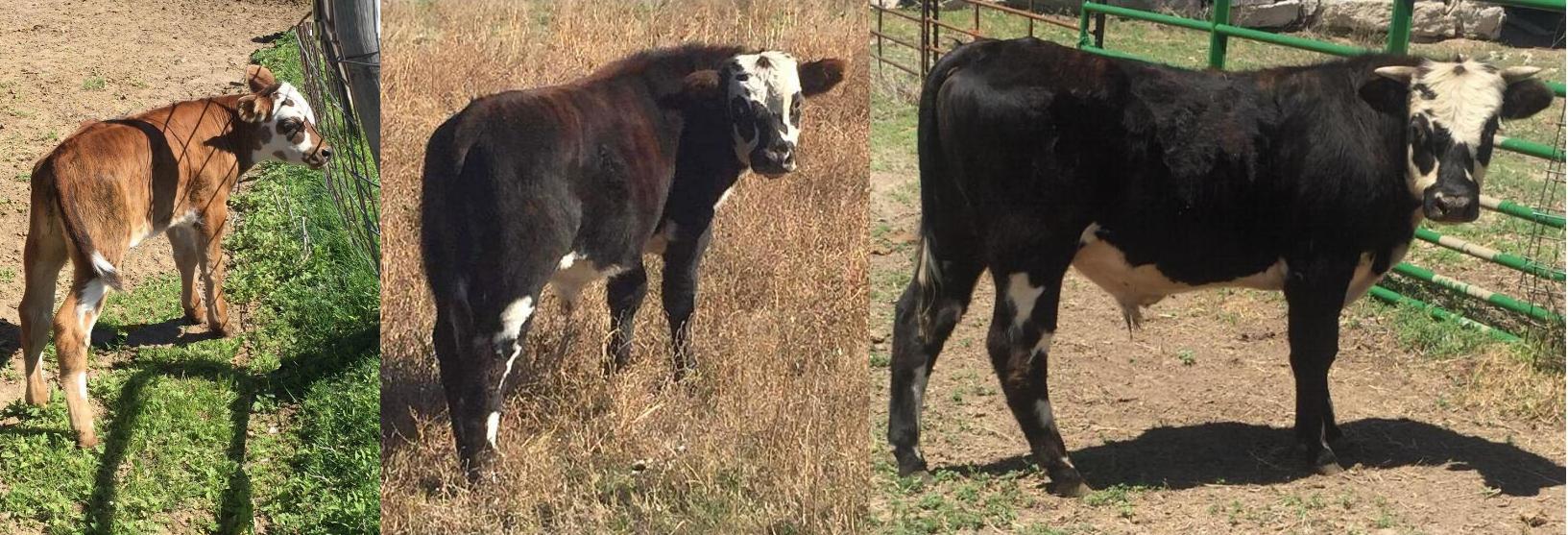
Mahogany: Normande cattle that have spots or patches of color that cover most of the body with coat color that appears predominantly mahogany brown, mulberry or sometimes even appearing black in color. Some of the underpinning area usually remains white. As demonstrated in above photo array, mahogany is an age progressing coat color in Normandes. Fullblood mahogany Normandes are still red (genetically).
Application & Submission forms
Downloadable PDFs to print, fill out, scan and email or mail to USNO office (address in footer at bottom of page):
A “dual purpose” form for USNO members…
NEW MEMBERS: Fill out membership ID info, sign and remit to office. All annual membership benefits come with any USNO Normande cattle registration & include:
- Free classified photo ads on USNO website (Marketing page) and posted on USNO Facebook groups
- Submission of Ranch/Farm listing in Breeder Directory
- Submission to Sire Directory (coming soon)
ALL MEMBERS; IMPORTANT: Please fill out this order form and include with every USNO order or transaction.
USNO works to keep registration affordable, while adding maximum value to Normande cattle. This is done by providing registration certificates that include 4 important differences:
№ 1. USNO issues registration numbers with international breed code prefixes.
№ 2. Normande cattle names & numbers are not changed.
№ 3. Original Normande dual purpose breed traits are preserved.
№ 4. Normande % and upgrade breed % composition is identified on registration certificate whenever known.
Checklist:
- Printed on back of each USNO Registration Certificate
- Must be signed & remitted to USNO office by last owner of record upon transer of ownership.
- Use to transfer up to 12 head of USNO registered (or applied for) cattle
- Transfer form must be signed by last owner of record, and must include the registration certificate when remitted to USNO office
Embryo Certificate page 1:
- Certificate of Embryo Recovery
- Certificate of Embryo Transfer Recipient ID
Embryo Certificate page 2:
- Instructions for completing Embryo Certificate form (pg.1)
- Internationally used Cattle Breed Codes (required for export)
Before resulting E.T. calves can be registered…
- One copy of this completed & signed certificate must be on file with the USNO office
- One copy of this completed & signed certificate must be kept with owner of embryo & recipient cow(s)
- All resulting E.T. calves must be genotyped & DNA parentage verified to both sire & dam
Embryo Transfer of Ownership Application form
Use to transfer ownership of a USNO registered embryo.
Cattle Lease Application forms:
- USNO: Lease Application form for USNO registered Normande cattle
- HCA: Lease Application form for all Homestead breeds of cattle
Blank 6-Generation Pedigree form
- use to remit pedigree to office
- useful for trial matings
- useful for figuring %bloodline or breed composition
A “multiple purpose” form:
- Classified Ad Submission form for USNO members
- See Marketing page for non-member ad rates
- Breeder Directory Submission form
Sire Directory (coming soon)
- This form contains links to HCA articles about selecting a bull that warrants genetics collection, health testing, DNA testing, and more.